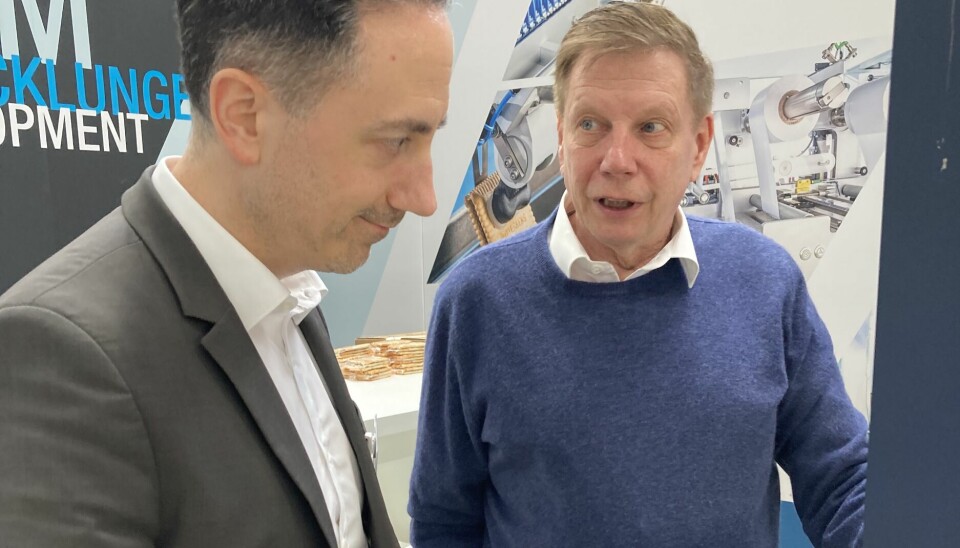Ralf Schubert in an interview about AI in mechanical engineering
AI is a tool, not a replacement

As a computer science graduate and managing partner of Gerhard Schubert GmbH, Ralf Schubert is probably the perfect interview partner for a discussion about the practical use of AI in mechanical engineering. And about where humans remain irreplaceable.
Mr. Schubert, today we want to talk a little about the role of AI in mechanical engineering. In which areas does AI already play a role at Schubert?
Ralf Schubert: Artificial intelligence (AI) is certainly not a panacea for today's demands in the packaging industry, but when used sensibly, it can simplify and accelerate processes. I see opportunities for the use of AI everywhere programming with algorithms does not work, algorithms are too complex or too slow. A vivid example of how AI based on neural networks ensures easy handling and high flexibility for the customer is the Schubert-Cobot Tog 519.
As a basis for controlling the Tog 519, we use a self-developed, AI-supported image processing. It recognizes both the products when picking them up and the environment in which they are to be placed. We do not need an expensive 3D camera for this; a standard 2D camera is completely sufficient. Even for bin-picking, because here the AI simply generates the 3D images needed for the cobot from the supplied camera images. The neural network of the cobot is so comprehensively trained that the robot can immediately process new products from the same product group.
At Schubert, AI not only helps the cobot to "see," but also provides the robots in the packaging machines with better paths. More precisely, more efficient movement sequences, called Schubert Motion. With the AI-controlled software, the movements of the packaging robots can be optimized for speed, significant vibration reduction, or even energy efficiency. Schubert Motion means that we generate and improve the paths of the robots using AI. Compared to human-programmed robot paths, these movement sequences are up to 20 percent faster, more energy-efficient, and gentler on the mechanics, which are less stressed.
For me, simplicity remains the key to packaging technology and thus also to the machines of the future. What could be highly interesting in this context is AI for programming, problem-solving, and knowledge management.

Knowledge management - this is particularly relevant in times of skilled labor shortages. How do you approach this?
Schubert: Absolutely, that's why we developed our Schubert Machine Finder. This software documents all the machines of the Schubert company - including their performance, packaging types, and other data. This way, designers can easily refer to previous projects. We are currently working on making this even easier, for example, through AI-supported search functions similar to a Google query.
A good practical example: During the coronavirus pandemic, we had a project where we all got stuck at a certain point and spent at least two hours developing and discarding solutions. Then suddenly someone in the group remembered that we had built a very similar machine about 20 years ago. After a call to the designer from back then, we were able to look at the technical drawing from that time and realized that it was exactly the solution we had been searching for. In the future, AI could make us even faster here.
When machines are in use, they provide valuable data. Could AI help make operations more sustainable here?
Schubert: Yes, the potential is fundamentally large here. With our approximately 700 machines in the field, which are in data exchange with us via our GS-Gate, AI could analyze frequent errors and, for example, identify the top ten problems. This way, if something does not work as desired, an operator could get direct hints from the machine about what the problem might be. However, I believe that in the end, a human will always be needed. Because if, for example, a box is poorly sealed, there can be extremely many causes: the erection of the box is a bit crooked, the sealing tool is defective, the blanks are damp, and so on... for the machine to decide on its own what the definite error is, it would need an enormous number of built-in sensors. And that would make the machine more complex and thus more prone to errors again - the opposite of what we actually want to achieve.
In addition, we also see opportunities in optimizing energy efficiency and material yield. However, the amount of data available to us is often still too small to develop truly comprehensive AI solutions. It is also challenging that our machines are usually unique, making it difficult to derive solutions from one machine to another. However, we are already using AI approaches to improve the analysis of employee feedback and operational data, for example.
Where do you see the future of mechanical engineering when increasingly sophisticated AI is used? Will it replace designers in the future?
Schubert: AI can and will support our designers - but not replace them. Our machines are very individual, and the amount of data we generate per year is simply not enough to fully utilize AI. The expertise and creativity of people remain essential. AI is a tool, not a replacement. Nevertheless, I see great opportunities in how AI can support the decision-making process and the optimization of future solutions.
In conclusion: what advice would you give to other companies looking to integrate AI into their processes?
Schubert: It is important to give employees the freedom to try new things and to create the right framework conditions. The entry should be through practical applications where the benefits are clearly recognizable. This keeps the threshold low, and progress becomes tangible step by step. And of course, it is crucial to focus on real added value for customers and processes. Especially at the beginning, you should not approach the matter too academically. My recommendation: just do it.